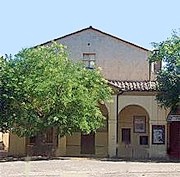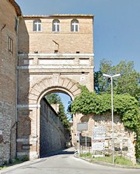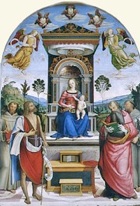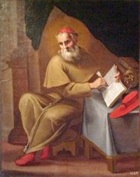
This convent, which was built around a distinctive semi-circular piazza, originally belonged to the Amadeiti Fathers, a reformed branch of the Franciscan Order. They seemed to have settled here in ca. 1483, when they apparently took over the spiritual guidance of the tertiary Franciscan nuns at Sant' Agnese and Sant' Antonio da Padova; these communities were locked in conflict with their erstwhile spiritual directors, the Observant Franciscans from the Convento di Monteripido, over the vexed issue of clausura.

The friars were very popular with the Perugians, who appreciated their works of charity, and who intervened on two occasions (in 1523 and 1563) when the papal authorities sought to remove them. When Pope Pius V finally merged the Amadeiti Fathers with the main branch of the Franciscans in 1568, the convent passed to the Observant Franciscans. They were expelled in 1810-15 and again, this time definitively, in 1866.
The ex-church now houses a cinema (the Teatro Zenith).
Art from the Church
San Girolamo Altarpiece (ca. 1510)

The altarpiece depicts the Madonna and Child enthroned, with two flying angels and the heads of three cherubs above. The scene is set in a landscape, with SS Francis and John the Baptist to the left and SS Jerome and Antony of Padua to the right. The structure of the throne and the figure of St John the Baptist derive from Raphael’s Ansidei Altarpiece (1505), which was then in San Fiorenzo, Perugia.
The document on the steps below the throne contains the clearly written lyrics of a popular Marian hymn, together with the accompanying music, set in four parts.
St Bonaventure in his Study (1669)




